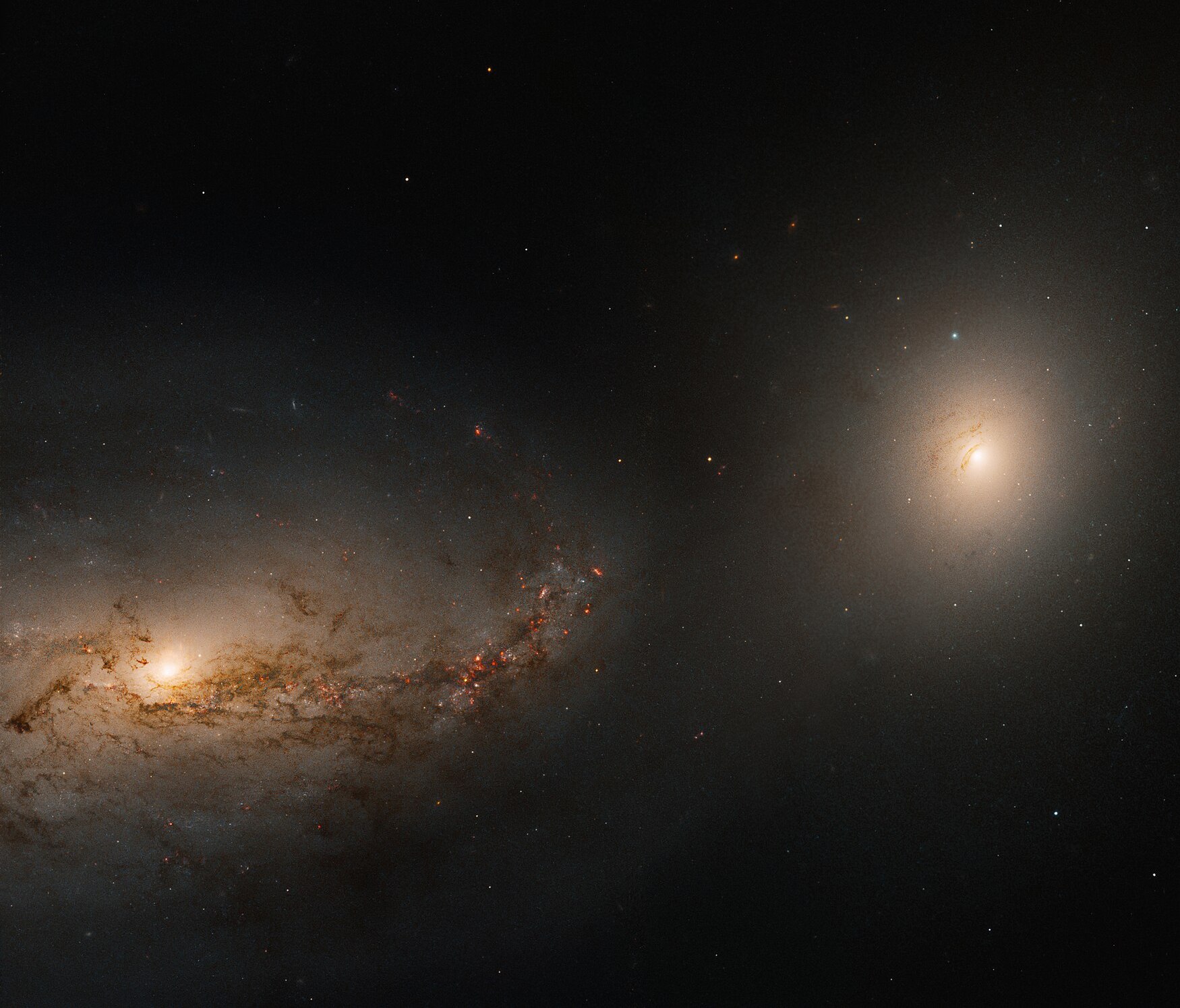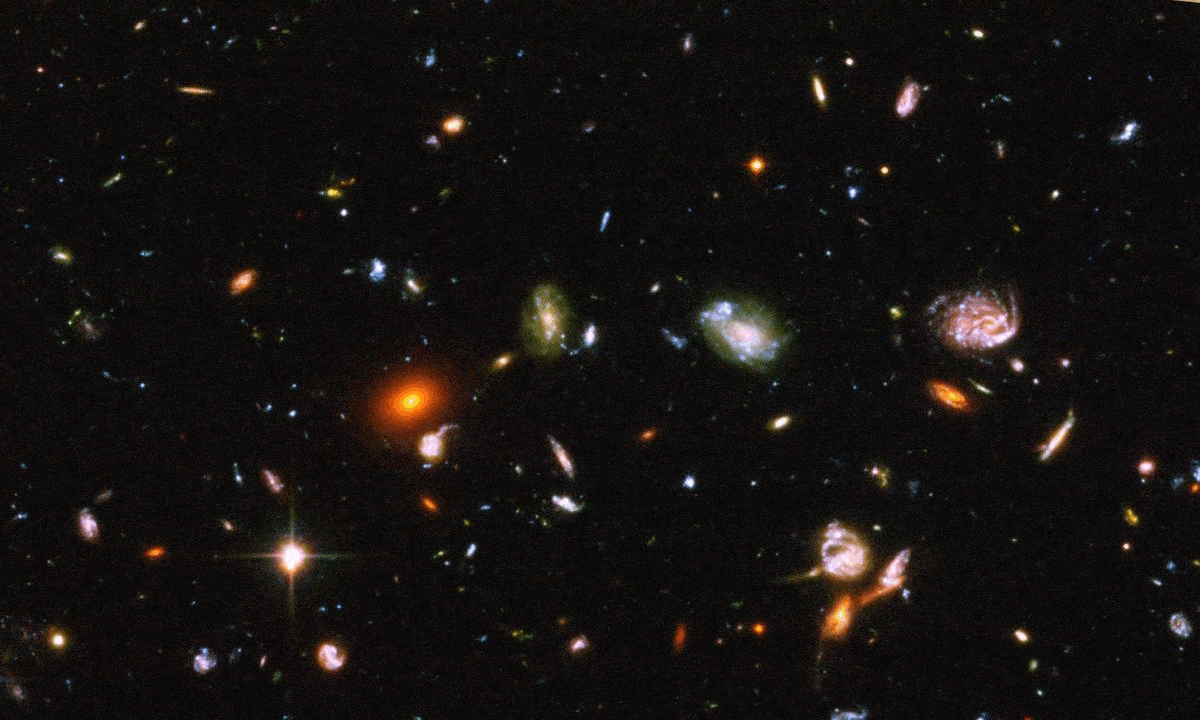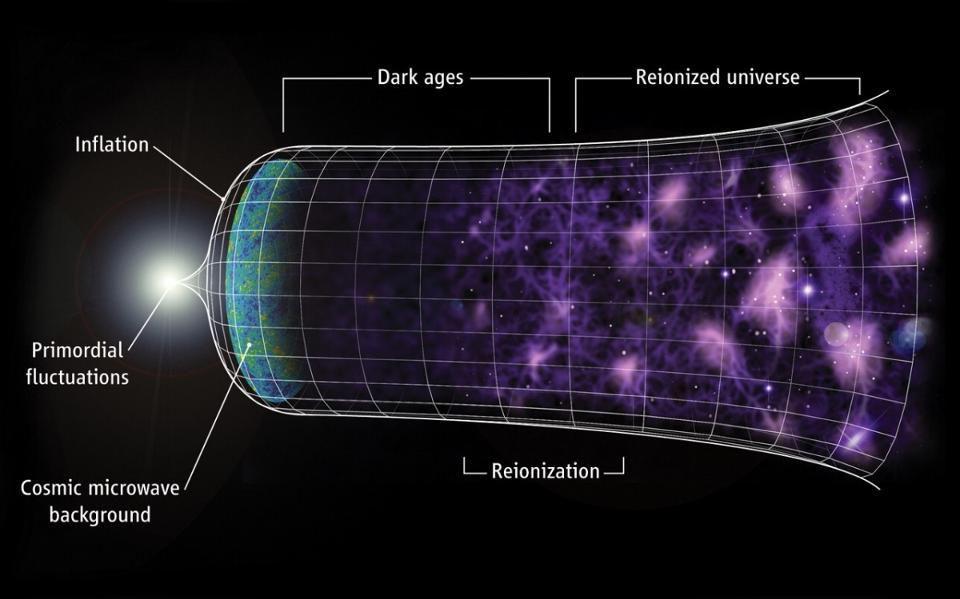Longest, strongest black hole jets of all-time discovered
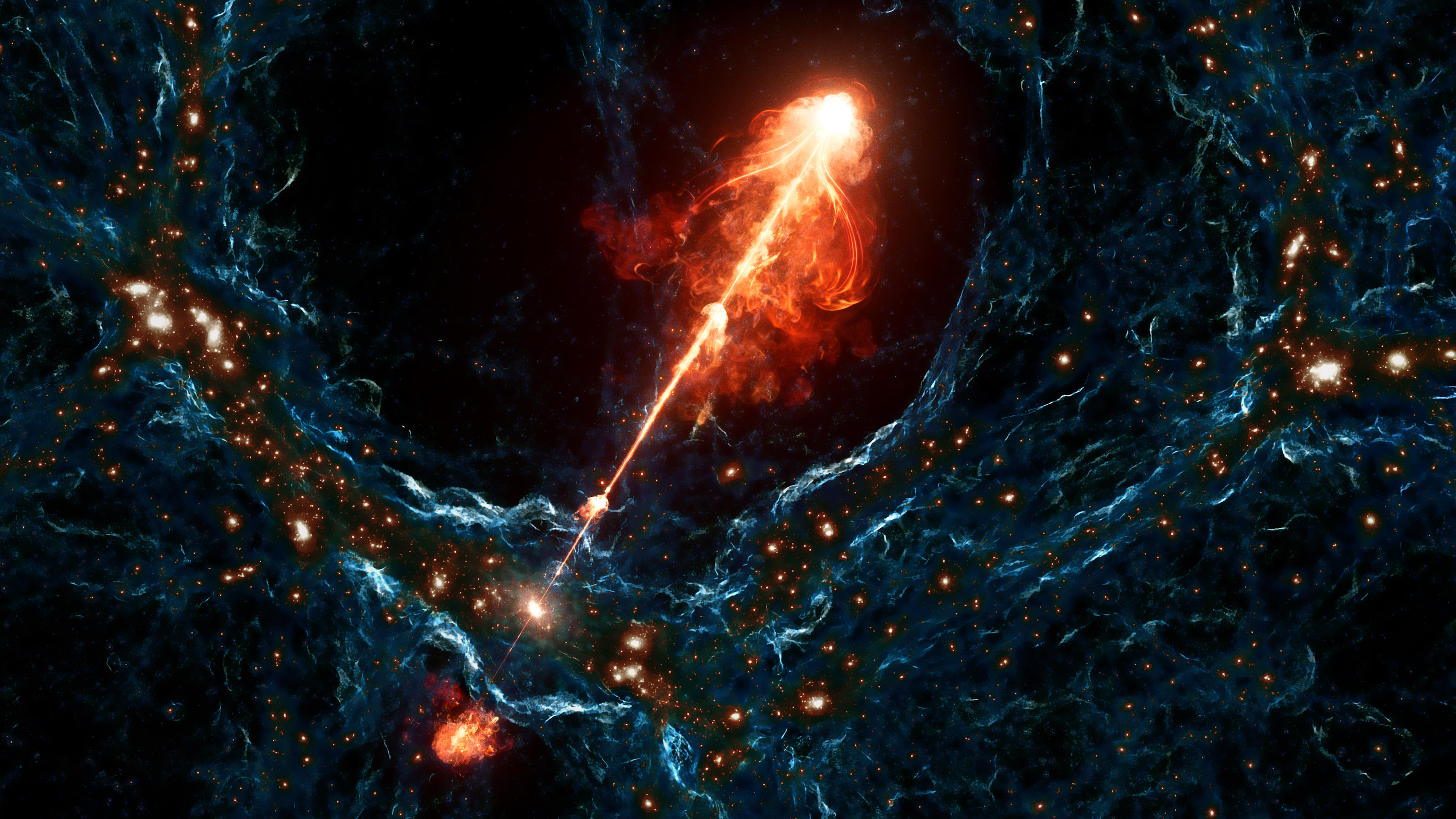
- For decades in astronomical research, the conventional wisdom has been that black hole jets can’t be larger than about a quarter the radius of a cosmic void, and none larger has ever been seen.
- That all changed with the discovery of Porphyrion: the largest black hole jet system ever discovered, which spans a spectacular 23-24 million light-years, the largest ever seen.
- This was also found in the young Universe, when densities were ~10 times higher and cosmic voids were only half their current size. At ~66% of a void’s radius, it’s causing us to rethink much of what we thought was certain.
How much of an influence can one single object in the Universe have? Until recently, we didn’t think it was all that much. Sure, individual objects can emit lots of things: photons of all wavelengths, neutrinos and antineutrinos of enormous energies, gravitational waves, and jets of energetic particles that can extend for thousands, hundreds of thousands, or maybe even millions of light-years. Collapsing massive stars can make core-collapse supernovae; merging neutron stars can make kilonovae; supermassive black holes can feed and transform into active galactic nuclei or quasars. All of these objects can, under the right conditions, emit more energy than all the stars within their host galaxies combined.
However, it won’t last. Unlike the steadily shining stars within galaxies, these energetic objects are temporary and transient: shining brilliantly for a brief amount of time, and then fading away back to a quiescent state. They’re capable of not only creating energetic bursts of radiation, but of interacting with the matter that surrounds them:
- creating ionized regions of space,
- blowing bubbles in the interstellar medium,
- or even enormous lobes that extend far beyond the galaxy itself, glowing brilliantly in radio light.
Just two years ago, a new record was set for the largest structure ever created by a single object, as the radio lobes from galaxy Alcyoneus spanned a whopping 16 million light-years across. Now, however, that record has been shattered again, as a newer, younger, more powerful active galaxy known as Porphyrion has just been discovered. Its black hole-powered jets span a fantastic 24 million light-years in size: the largest structure created by a single object in the known Universe.

Black hole jets, themselves, aren’t necessarily so rare. Most large galaxies house supermassive black holes at their centers, and most of these black holes are millions or even billions of times the mass of our own Sun. Under typical conditions, galaxies are relatively quiet:
- they aren’t merging,
- they aren’t interacting with a neighbor,
- they aren’t actively feeding on a source of matter,
- and they’re only forming stars at a slow, steady rate, dependent on the amount of gas they possess in their disks and halos.
These conditions describe most galaxies, including the Milky Way and Andromeda, not only at present, but during most of the history of the Universe.
However, galaxies go through periods of time where things are anything but typical. Galaxies do merge, as large galaxies gobble up smaller, more common ones and also when two or more large galaxies collide and join together. Galaxies interact gravitationally, and when they experience close encounters with one another, the uneven pull on the internal matter causes star-formation episodes and can pull gas, stars, and more onto the central black hole. All sorts of types of matter can funnel material into the galactic center, where the supermassive black hole will feast on it. And sometimes, stars form in great bursts, not only in the central regions of galaxies but sometimes all throughout it. Any of these events, which are rare today but were far more common in the distant past, can activate a galaxy’s central black hole.

In the nearby Universe, we see numerous examples of active galaxies. Messier 87, the giant elliptical galaxy at the heart of the Virgo cluster, shows large-scale features that appear across multiple wavelengths of light, including an optical jet that’s more than 5000 light-years long. Centaurus A is the closest active galaxy, located just 11 million light-years away, with emissions ranging from long-wavelength radio light to energetic X-ray light. And Hercules A, a supergiant elliptical galaxy located an impressive two billion light-years away, famously exhibits two vast radio lobes (shown above) that its supermassive black hole is blowing well beyond the galaxy itself: into the intergalactic medium.
The extent of these jets can be large: larger than the stellar or gaseous extent of any known galaxy. Whereas the largest galaxy known today is IC 1101 at the center of galaxy cluster Abell 2029, with an end-to-end extent of around 6 million light-years, that’s peanuts compared to the largest black hole jet previously known. That honor belongs to Alcyoneus, which was determined in 2022 to have its giant radio lobes span a distance of an impressive 16 million light-years from one end to the other. Found by Martijn Oei, then finishing his PhD studies at Leiden University, its extent was the largest structure ever produced by a single object known at the time.

Alcyoneus, for a while, seemed to be as large as it gets for these radio jets. It was the first structure created by a single object known to approach the scale of the cosmic web: the large-scale structure of the Universe characterized by a web of interconnected filaments of matter, separated by vast cosmic voids, or regions virtually devoid of stars and galaxies. In the nearby Universe, the typical radius of a cosmic void is somewhere around 50-70 million light-years, meaning that Alcyoneus was an impressive 20-30% the size of a cosmic void.
Many didn’t expect that larger such jets would be possible. Observationally, none had been discovered, and from a theoretical viewpoint, there were many reasons to expect that 16 million light-years, or about 5 Megaparsecs, would be the maximum size that such jets would be able to achieve, assuming we understood the physics that drove them. Typical jets only span a few galaxy diameters, largely limited by factors like:
- the amount of matter falling into the supermassive black hole,
- the duration of time that the supermassive black hole remains active,
- and the density of the intergalactic medium, which resists the outward motion and expansion of these energetic jets.
It was also thought that, as we looked back earlier and earlier into the history Universe, there would be a greater fraction of active galaxies, but those same size/scale limits of these jets, both from an absolute perspective and relative to the size of a standard cosmic void, would get no larger.

With a brand new paper, published in the journal Nature on September 18, 2024, those expectations have now been demolished. A team of scientists, led by Martijn Oei (who’s now a postdoctoral researcher at Caltech), has discovered a brand new structure in the Universe: the first one that actually is on the scale of the cosmic web itself. The structure, which they name Porphyrion — which, like Alcyoneus, takes its name after one of the Gigantes from Greek mythology — is a whopping 24 million light-years (or 7.3 Mpc) from end to end, and isn’t exactly nearby, but rather comes to us from an impressive 7.5 billion years ago: when the Universe was only about half of its present size.
It’s not at all an exaggeration to state that this revolutionizes our view of how large and massive cosmic jets can get, and causes us to re-evaluate their potential role in shaping the Universe as we see it today. Whereas Alcyoneus, which is relatively close by, is only ~30% the extent of a cosmic void’s radius, Porphyrion is about 66% (or two-thirds) the radius of a cosmic void at that epoch in cosmic history. We’re not talking about “a few times the diameter of a galaxy” here, like we normally do for black hole jets. Instead, Porphyrion’s jets are a whopping 140 times the diameter of the Milky Way from end-to-end: by far the largest ever discovered.
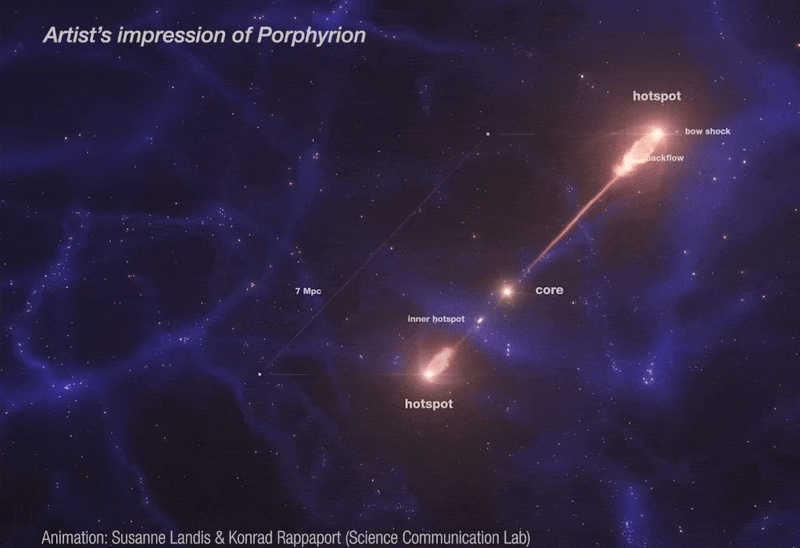
This has enormous implications for how the Universe grew up. Because:
- galaxy mergers, including major mergers,
- galaxy-galaxy interactions,
- and gas infall onto galaxies,
were all more common in the younger Universe, we have every reason to expect that these black hole jets, including extremely large and energetic black hole jets, were far more common in the early Universe than they are today. Given that the Universe was smaller back then — as the Universe and the sizes of voids and filaments within it expands over time — this hints that massive black hole jets could have played an important role in shaping the largest-scale features in the Universe itself.
For example, the power of this jet system is enormous: estimated at around 1039 watts by the study authors. That’s more than two trillion times the amount of power emitted by the Sun, and more power than gets emitted by all the stars in the galaxy that created Porphyrion put together. The extent of this jet system indicates an advanced age for it, indicating that the active black hole powering it must have been active for around a billion years at least: an extremely long time for a galaxy to remain active. Other than a major merger, or perhaps a series of major mergers, there’s no known source of matter that can power an active galaxy for such a long duration.

For these jets to grow to such an enormous extent requires a series of remarkable events to occur. First, the jets need to blast through the medium around the black hole, then through the interstellar gas and dust within the galaxy, next breaking through the circumgalactic medium that extends for hundreds of thousands of light-years around the galaxy, until it finally penetrates into intergalactic space. The high power of these jets, especially over long lifetimes, normally leads to these jets and those giant radio lobes spreading out over time. In the case of Porphyrion, this did not occur; Porphyrion’s existence demonstrates, unexpectedly, that black hole jets can persist in a coherent fashion for much longer than was previously known.
The power of these jets, cumulatively over time, allows us to estimate how significantly the mass of the black hole that powers it must have grown during this time. Although black holes are notoriously messy eaters — I frequently liken them to Cookie Monsters for how sloppily they eat — much of the matter that falls onto them does indeed get absorbed, growing the mass of the black hole. Just from the creation of these massive jets, we can infer that the black hole at the center of Porphyrion:
- grew by at least ~1 billion solar masses during the production of this jet,
- was already supermassive (at ~1 billion solar masses or more) prior to the jet turning on,
- and did not have its orientation significantly perturbed during the entirety of the time it was active.
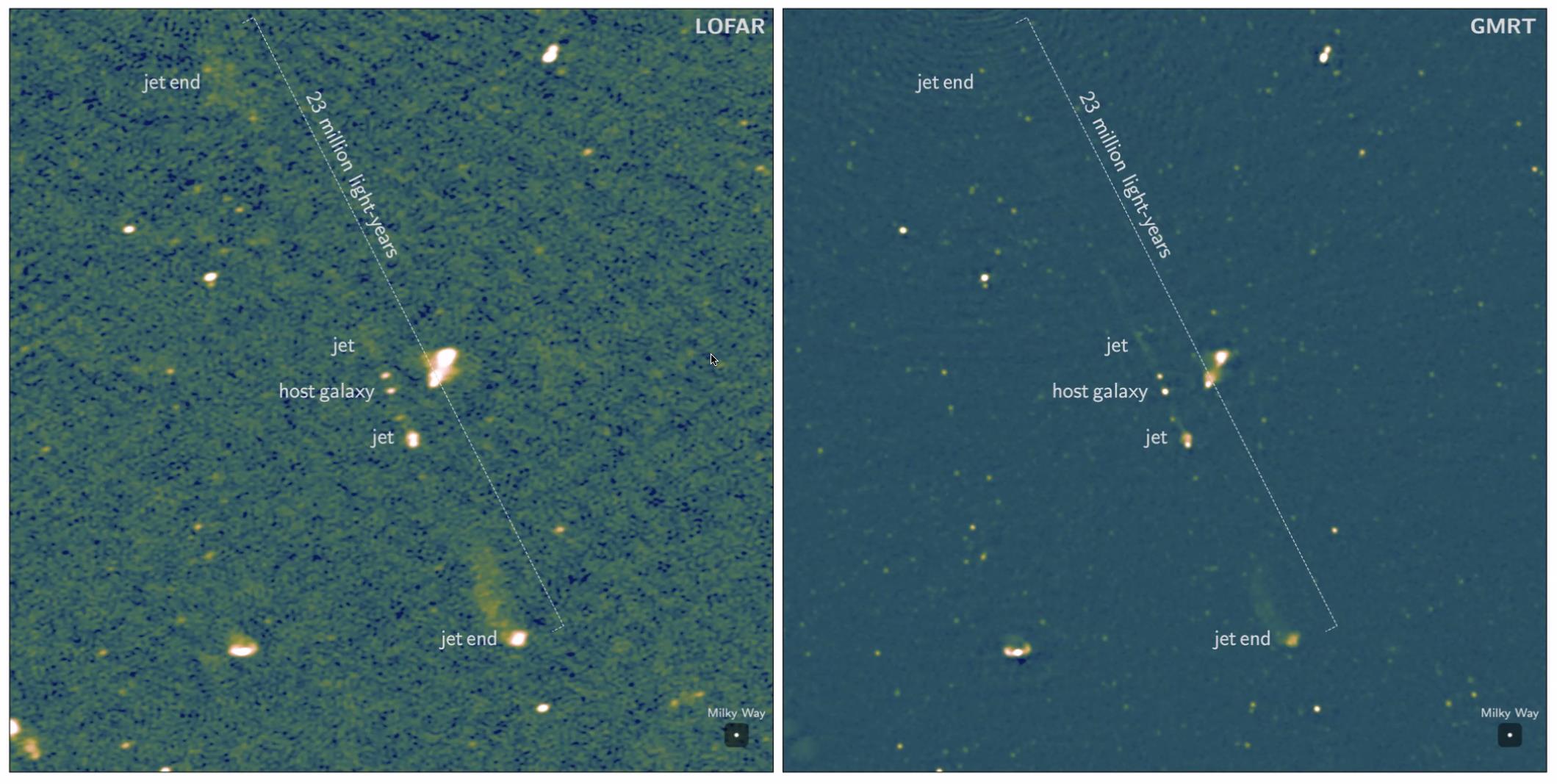
There are also significant implications for the intergalactic medium that Porphyrion’s discovery carries along with it. Because these systems should have been far more common early on in cosmic history, they could be heavily responsible for not only injecting energy into the intergalactic medium, but could be the primary culprit behind why the intergalactic medium is so heavily magnetized.
We’d previously considered that magnetism arises on enormous cosmic scales from stars and stellar processes, but those are largely confined to galaxies. There’s a physics mechanism known as a Biermann battery, where electrons and ions will separate even when subjected to purely gravitational forces, and that’s been considered as a culprit for magnetizing the intergalactic medium, as well as amplified seed magnetic fields arising from processes in the very early Universe.
However, now there’s a new contender: black hole jets, penetrating so deeply into intergalactic space and even into cosmic voids, could also magnetize the intergalactic medium. It was long thought that magnetohydrodynamic instabilities would destabilize these jets and prevent them from being so large and remaining coherent; Porphyrion has definitively shown us that is not the case at all, even early on, when the Universe was around ten times as dense as it is today!
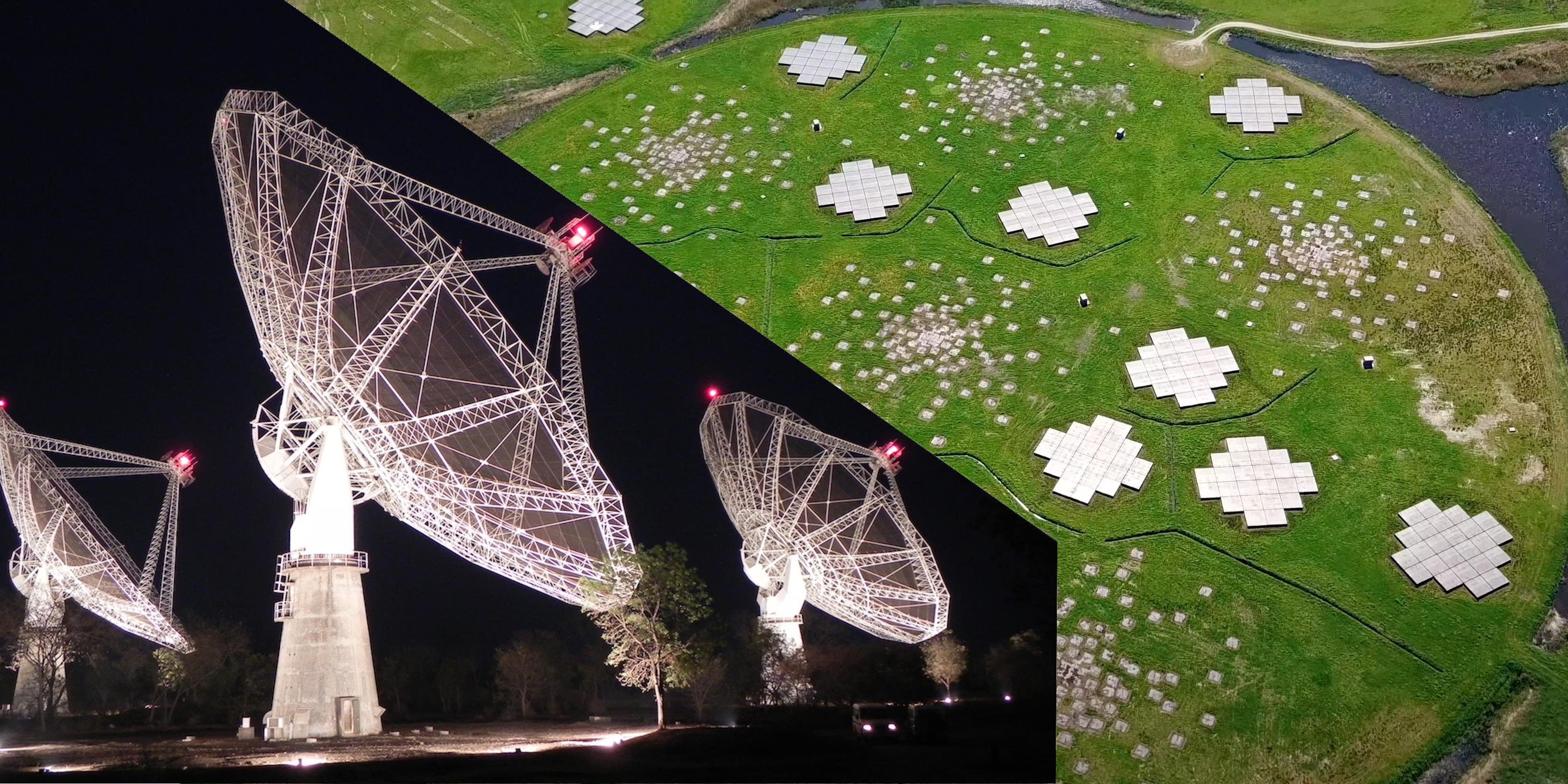
When you find “the first” of any new phenomena or class of object, of course, you have to wonder not only if there are others like it, but how common they are. Although Porphyrion is the largest black hole jet system ever discovered, and all other comparably large ones are much closer to us (and hence, are found when the Universe is much larger and more evolved), there are good reasons to expect that this is just the proverbial tip of the iceberg when it comes to incredibly long, powerful, enduring black hole jet systems.
One notable aspect of Porphyrion is that it isn’t viewed “face on,” where we’re looking down the barrel of one of these jets. Those objects are easy to see because they’re so bright, and are known as BL Lacertae objects (or blazars), but we cannot determine how large in extent the jets from those objects are precisely because we can’t view their properties in other dimensions. They’re known to exist with comparable energies to Porphyrion and at even earlier times, but good measurements of them are elusive, as the jet itself outshines the galaxy.
However, many of the most distant objects in the known Universe — the little red dots discovered by JWST — are so bright precisely because the light we’re seeing isn’t just coming from stars, but rather appears to be enhanced by black hole jets that, at least in some cases, are being beamed directly along our line-of-sight.
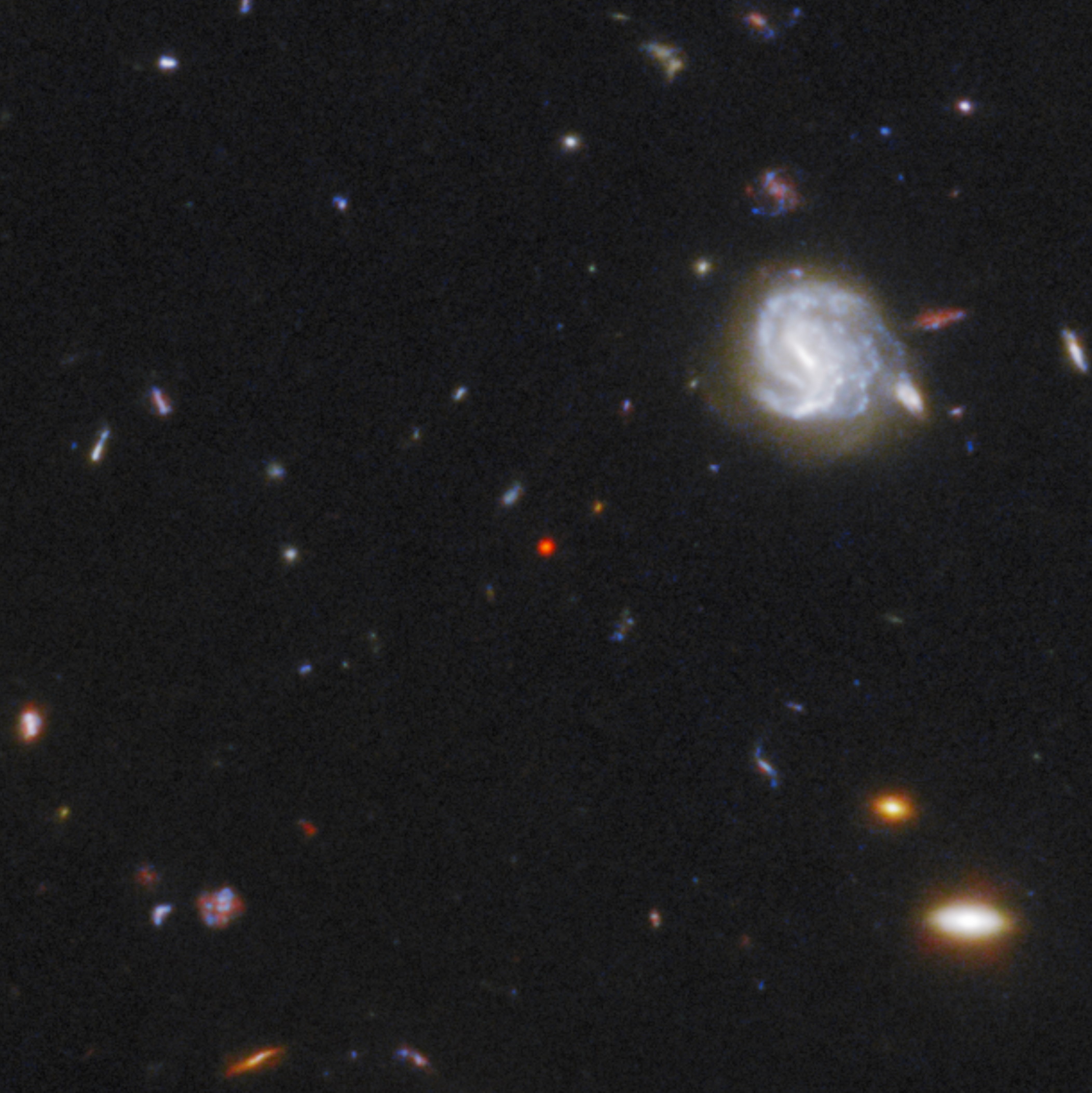
In recent years, we’ve learned that black holes are more numerous, represent a larger mass fraction, and arose earlier and with larger masses at early times than we had previously anticipated. Now, it appears we’re also learning that black holes can turn on, remain active, and emit power coherently in the form of relativistic jets for much longer than we thought was theoretically possible. If this was a process that didn’t just happen 7-8 billion years ago, when the Universe was half its present size, but 10, 12, or 13.5 billion years ago — i.e., back in the very early Universe — then it’s eminently possible that supermassive black holes are much more responsible for the shape and properties of the Universe than anyone has realized up until now.
But how common, truly, are systems like Porphyrion? In order to make one, you need a massive, major merger that lasts for a long time and continues to feed an already-supermassive black hole without disrupting it. That’s a task for future astronomical surveys, and will require viewing large amounts of the Universe in multiple different wavelengths of radio light. With the discovery of Porphyrion, we now know which cosmic questions to ask if we want to understand the relationship between the Universe’s growth and evolution and the supermassive black holes (and their energetic jets) within it. The answers, however, will have to wait until that new, yet-untaken data arrives.

